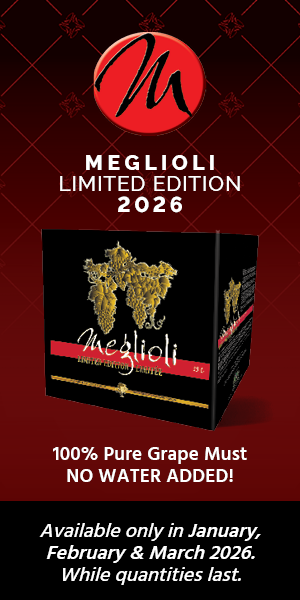 I recently had the opportunity to visit Portugal, magical land of Mateus, Port and home of 80% of the world’s cork supply. While it was a pleasure trip, I had time to visit cork forests, cork factories, Port lodges and the vineyards of the Douro and upper Douro — pleasure is my business, after all.
I recently had the opportunity to visit Portugal, magical land of Mateus, Port and home of 80% of the world’s cork supply. While it was a pleasure trip, I had time to visit cork forests, cork factories, Port lodges and the vineyards of the Douro and upper Douro — pleasure is my business, after all.
And it was a very timely visit. The ongoing debate about which closure is best is about to heat up — and like a lot of hot things, it’s going to throw off sparks. In the last twenty years natural corks have lost a significant percentage of their market share to other wine bottle closures.
How did natural corks come to this? To make a long, complex story short, wineries got fed up with the product losses associated with cork taint, and for many years the producers of natural and engineered cork products didn’t display much interest in their concerns. Cork taint is the stinky, unpleasant effect of, 4,6-trichloroanisole (TCA) on wine. It happens when a naturally occurring fungus found both in the air and in forest floor soils interacts with chlorophenol compounds. Chlorophenols can be airborne from industrial pollutants, can come from chemicals such as pesticides and wood treatments, or from hypochlorite (bleach), which producers previously used to sanitize and whiten cork bark (how ironic!).
The problem was a major bone of contention between the cork industry and wine producers, and figures of anything from less than one percent to more than 15% contamination were tossed around, depending on who was holding the bag for the spoiled wine. A 2003 assessment from Wine Spectator magazine concluded that in a sample of nearly 3,000 bottles, 7% were contaminated. This drives wineries nuts, because few consumers ever say, “Oh my, this faultless wine was despoiled by unfortunate contact with an errant cork!” Instead, they grumble and swear never to buy that “awful” wine again.
In the time it took the cork producers to respond to the concerns of wineries (and their accountants and lawyers), other types of closures had stepped into the breach, each claiming to be superior to cork. It was an uphill battle for most of them, as cork has the romance associated with corkscrews and that delightful “pop” from the bottle. But significant inroads were made into cork territory.
Basic types of modern closures:
- Natural cut corks are punched-out chunks of cork bark. Simple tech, thousands of years old, very romantic. But remember that taint problem.
- Engineered corks (sometimes called Agglomerated corks) come in a variety of styles, with smaller or larger bits of cork glued together and molded/sanded into shape. Some get slices of natural cork to finish the ends, called ”Twin Tops.” Great way to use up otherwise non-viable chunks of cork bark, and they perform well, but they’re partly made of glue and have the same potential for taint. Also, some of them may not be suitable for home corking machines.
- Synthetic corks are plastic plugs that look like corks and are used exactly the same way. Some are made of injection-molded plastic, others extruded foam. The extruded ones perform quite well, even in the kind of corkers used by home winemakers, but the jury is still out on their long-term use.
- Screw caps are aluminum bottle tops that get press-fitted onto the threads on the bottleneck. Impermeable, they would seem to represent the most foolproof closure — but all is not as simple as it seems.
In a recent issue of the industry journal I was reading, there were advertisements for closures on pages 2, 4, 6, 8, 10, 14, 22, 33, 34, and 48. Each one was a full-page, full-color, with brilliant graphic design and lots of clever touches. Each producer also propounded the particular features of the closure, intimating that really, they were the only ones providing the perfect solution to keeping wine inside of bottles.
But is there a perfect closure? And in contrast to their positive advertising, what about the unique problems that each closure presents? I’ll try to sort through a little bit of this. First though, full disclosure. I’m an employee of a company that purchases a lot of corks, natural, engineered, synthetic and screw caps. As such, I have relationships with various manufacturers of each of these types of closures. In a way it’s kind of fortunate that our business is spread among all of them — any bias I might have should be evenly spread out.
Screw caps
I have a confession to make: I love screw caps. But it’s not a hopeless, helpless love. Far from it: I recognize their limitations, and love them for what they have to offer, which is foolproof, taint-proof, leak-proof closure for bottles. Screw-capped bottles don’t require a special implement to open them, and they can be resealed if you don’t drink all of the wine at once. They never chip, rot, split, dry out or crumble and would be perfect except for three flaws: one technical, one philosophical and one practical.
The technical flaw is attached to their very perfection: screw caps, when attached correctly, have an oxygen transfer rate (OTR) that is very low. This is a flaw when the wine under the closure has a lot of volatile aromatic compounds in it, like sulphurs. If the wine is stinky when it goes in the bottle, it’ll be stinky for a very long time, whereas a closure that breathes a little more (natural cork) or even a bit more than that (some synthetics) can reduce the volatile compounds, making them non-stinky. This means that a producer must fully understand the reduction and oxidation (redox) potential of the wine before they bottle it, or their customers could be disappointed in the result.
What might be more troubling, philosophically, is the energy cost of producing aluminum, the material used to make screwcaps. It takes roughly 15 kilowatt-hours to make a kilogram (2.2 lb.) of aluminium. That’s equivalent to running 150 one-hundred watt bulbs for a whole hour. Considering that the People’s Republic of China is the world’s #1 producer of aluminium, and they derive a significant amount of electricity from burning coal, the potential carbon footprint of a screwcap looms large.
The third issue makes all of that moot, however: screwcaps require a special capping machine to fix them on the bottle top, and it only works with one kind of bottle at a time, and one kind of cap. Few home winemakers are going to shell out the tens of thousands of dollars even the cheapest capping line will run, or buy the special bottles and caps in the rather vast minimum-quantities required.
Synthetics
Made to look like corks and compress and seal bottles in a similar fashion, synthetic corks appear to have it all. While early versions, solid plugs of cast or injection molded plastic, turned out to be hard to insert (requiring special vacuum machinery) and difficult to remove (requiring a strong corkscrew and the upper body strength of a gorilla), newer versions, made from extruded foamed plastic coated with a flexible outer layer, insert and remove easily.
A criticism of synthetics is that they have high oxygen transfer rates, leading to spoilage and oxidation of wines held under them. There are now several competing studies on this subject. Not surprisingly the studies sponsored by synthetic cork companies show them coming out on top, while those sponsored by the natural cork industry are less complimentary. From wading through many pages of data and counter-claims by participants it seems to shake out that extruded synthetic corks do have higher OTR’s than natural corks, but not that the rate of transfer is high enough to cause quick spoilage or outright oxidation.
Alas for synthetics their carbon footprint is a definite issue: the feedstock for the plastic used is natural gas, and although it can be recycled, it almost never is and winds up in our landfills.
Corks
First, let’s look where our traditional cork comes from. Cork trees grow around the Mediterranean, with the bulk of cork production taking place in Portugal, followed by Spain and Italy — Sardinia and Corsica produce a surprising number of corks, but it’s a small percentage of the world powerhouse, Portugal.
Cork trees are a very long-lived variety of oak. The soil and climate they grow in is often of less-than perfect arability, and they require a lot of space around them to flourish, so cork forests are interestingly spacious and uncluttered. The trees grow for 25 years before they can produce their first harvest of bark, and that one isn’t usable for closures. They can then be harvested every nine years after that. Once the bark is stripped it’s painted in a prominent location with the last two digits of the year of harvest — at a glance you can tell how long before the next time the bark is to be stripped.
Stripped is a good description: The trees are effectively skinned alive, doing them little to no harm — as long as the delicate underlayer of bark isn’t compromised, the outer layer will regrow for harvest, you guessed it, over the course of nine years. The section to be harvested starts a foot or so up from the ground. This is important: ground level is where the forest floor is, and that’s where dirt, mold and organic contaminants that could be carried over to the finished product lurk.
They stop stripping six to ten feet up the tree. Above that, branches interfere with getting large, smooth sheets, and a percentage of the bark needs to remain to keep the tree healthy. The bark is then stacked up for collection, on stainless steel pallets. Previously the sheets of bark would be piled in the forest for a period of aging to soften the bark and let it outgas and become workable. This was a terrible idea, and it’s a part of the reason why cork contamination problems reached the levels they did. Remember, the forest floor is where the mold that makes up half of the unholy duo of cork contamination lives.
Nowadays the cork bark doesn’t sit in the forest any longer than it takes a truck to get dispatched for pickup. Cork producers bring the bark into their facilities, where it ages on concrete pads. The concrete ensures that mold and dirt don’t come in contact with the bark, and they’re all sloped to allow any rainwater to drain away from the piles.
After the aging period the bark sheets are poached in boiling water for a short period of time. Back in the bad old days this water was rarely changed, it had hypochlorite in it, and the cork sheets were stacked deep and held under the water by powerful presses. This ensured that if there was any fungus in the bark, it sucked up hot, chlorinated water the second the pressure from the rams came off.
Nowadays the water is highly filtered and unchlorinated. It’s also continuously recirculated, distilled to remove any volatile organic compounds (including chlorophenols) and changed for every batch of bark. This has gone a long way to reduce TCA. However, although they’re working on it, and do quality assurance testing for it, the issue isn’t going away.
After boiling, the cork is cooled, allowed to dry, sliced into pieces and graded. Thick, flaw-free pieces get punched into whole corks, which are then sanded smooth, sorted and graded. The thin flaw-free pieces get sliced into layers for the discs used on the end of engineered corks (the top part of “Twin Top”) and everything else gets ground up.
Engineered corks
The ground-up bits of cork are sorted, any bark or brown bits (lignin, the fibrous part of bark) is removed, and the beige chunks (suberin, the nice compressible bits) are retained. These are mixed with glue and pressed into molds. After baking and subsequent cooling they’re sanded down to size, smoothed out and graded.
It’s important to note that there are two significantly different versions of engineered corks. The first kind, in general use in value-priced wines around the world, uses a very small (about one millimeter) granule of cork. This allows for lower levels of waste, as the small, uniform pieces fill the cork molds easily and completely. However, it also means that by volume a larger percentage of the body of the cork is composed of glue, making it harder to compress and insert into a bottle. Many hand corkers (the twin-lever kind or the sort that has a sort of one-handed clamp and a plunger set-up) cannot successfully compress these corks.
The other type of cork has much larger particles, around 5 millimeters in size. These engineered corks are actually diverted from those intended for bottling Champagne. They start off in a much bigger mold, but rather than getting one end chamfered and two cork discs glued onto the other (look at the next champagne cork you see), those intended for home winemakers get sanded and sized just like the other engineered corks. However, due to the larger particle size they compress more easily, and can be inserted by a wider variety of corking implements.
One big plus of engineered corks is their cost, which is typically the lowest of any closure available to home winemakers. Of course, the very lowest price may not provide the best value — make sure you’re not getting very old corks or those diverted from commercial wineries. Old corks may have dried out and the glue failed as it pulled away from the cork pieces, and engineered corks diverted from winery production are usually the small-particle sort and thus hard to insert.
Drawbacks of engineered corks? They’re still made from cork, which means that despite the efforts of the cork industry, there’s still the chance of TCA. Plus, the glue holding the corks together is a polymer derived from petroleum products. While it’s food-safe and works extremely well, it still has a carbon-footprint issue.
The best closure
Which bottle closure is best for you is going to come down to your personal philosophy and your risk-averseness. On the one hand, natural corks have the lowest carbon footprint — they actually take carbon out of the air and sequester it. There’s even a US program that has started to recycle corks (http://www.recorkamerica.com/) in California, and a pilot version is underway in Quebec, which should be available in the rest of Canada by 2009.
But both natural and engineered corks have the TCA issue, although, according to an October 2007 article in Wines and Vines magazine, during a 2007 Napa symposium on the subject, world cork expert Pascal de Chatonnet cited numbers from an ongoing survey of TCA-tainted corks, stating that the incidence of wines confirmed by lab tests to be contaminated had dropped from 4.9% in 2003 to 0.2% in 2006.
Extruded synthetic corks, which I often recommend to home winemakers, work well and are completely free of TCA issues, but for long-term storage the studies aren’t all in yet. Also, if you’re committed to environmental improvement you’ll need to offset using a petroleum product.
Consulting the experts can be a bit alarming, as many of them are predicting gloom and doom for corks. According to the Berry Bros. & Rudd’s “Future of Wine” report, “…despite all the protestations of improvement from the cork industry, it is still outrageous to accept a failure rate even as low as 2% in wine closures.
Future generations will look back on this era in amazement at the thought that, after all the technological advances made in the vineyard and cellar, we continued to finish off the process by shoving a piece of tree bark in the bottle.
More and more state-of-the-art wineries are moving to screwcap and Stelvin will become the standard for the majority of the world’s wines.
Alun Griffiths MW predicts: ‘Advances in technology will produce a product with cork’s ability to allow only a little ingress of oxygen. It is inconceivable we will be using cork in 50 years’ time — except for perhaps 1 or 2% of very fine wines that still require maturation.’
…Berrys predicts new, man-made closures will be used that replicate the function of corks without their potentially damaging side-effects.”
While this sounds dramatic and positive, I’m not sure cork producers would immediately agree with this scenario.
Things were much simpler back when the only closures available were corks diverted to the home winemaking industry from commercial wineries, and you had to take what you could get. But if we go down that route, remember that before the Romans started using corks in 500 BCE they relied on plugs of mud and straw, or a wad of bitumen to seal their amphorae — things could always be worse!
Tim Vandergrift says much of his research on closures has been conducted on the urging of people telling him to “stick a cork in it.” He can be found blogging at www.timswineblog.com.






